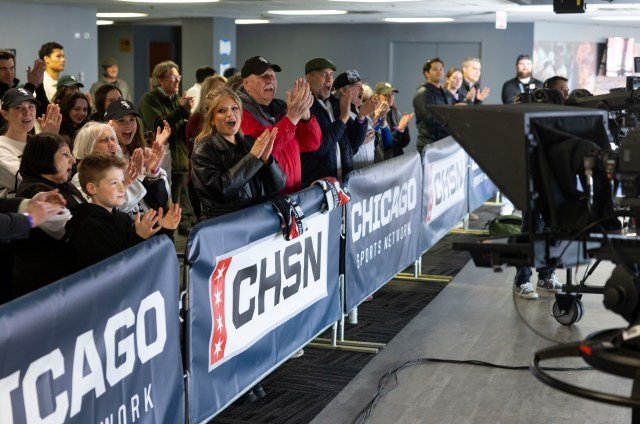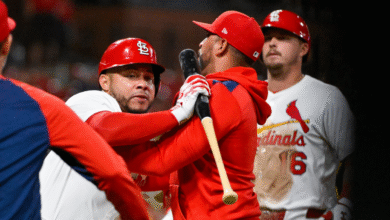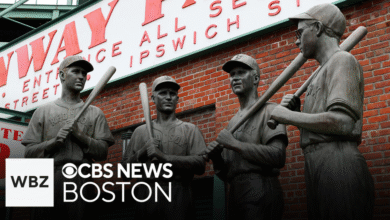New CHSN-Comcast Deal Outrages Chicago Sports Fans with Sky-High Prices & TV Blackouts!

Frustration Mounts Among Chicago Sports Fans Over CHSN-Comcast Deal
In recent weeks, sports enthusiasts in Chicago have found themselves grappling with a significant change in their viewing options. The new deal between Comcast and the Chicago Sports Network (CHSN) has led to a discontinuation of free over-the-air channels for many fans. This abrupt shift is proving to be a troublesome experience for a city known for its passionate sports culture. In this blog post, we delve into the details of this new agreement, explore the implications for sports fans across Chicago, and discuss the wider concerns about media accessibility in the digital age.
The CHSN-Comcast Deal: An Overview
The CHSN-Comcast agreement, which aims to consolidate sports broadcasting within the region, raises multiple eyebrows due to the implications for viewers in Chicago. For years, sports fans enjoyed complimentary access to various events via over-the-air broadcasts, thanks to local channels dedicated to delivering sports content. However, under the new arrangement, access to CHSN events will be considerably restricted, as the deal prioritizes cable and streaming subscriptions over traditional free viewing.
At its core, the agreement intends to enhance the profitability of sports broadcasting by leaning into the growing trend of paid subscriptions. As a result of this shift, many dedicated fans are left feeling frustrated, facing higher costs while losing their cherished free access to local sports events. With teams like the Chicago Bulls, Chicago Cubs, and Chicago White Sox often the center of fans’ excitement, the loss of affordable access threatens to dampen the sports spirit embedded in the city.
Understanding the Cost Implications
One of the most significant concerns arising from the CHSN-Comcast deal is the financial burden it places on fans. In a market where obtaining cable television packages often comes with hefty price tags, many Chicagoans are now facing the prospect of increased monthly fees. While some might argue that the upgrade offers improved viewing quality or additional content, the end result is still the same: fans are compelled to pay for what was once free.
- Subscription Services: Fans now need to subscribe to cable or streaming services to access the sports content they desire. Depending on the provider, this can mean paying anywhere from $50 to over $100 a month.
- Accessibility: Those who are unable to afford traditional cable packages may find themselves without coverage for their favorite teams, potentially alienating passionate supporters from the sports community.
- Bundling Costs: Some fans may not only need to contend with increased costs for sports packages but also need to pay for additional channels that are often bundled with the sports networks, further raising their monthly expenses.
Lost Connection to Local Sports Teams
For many Chicagoans, the thrill of local sports is deeply interwoven with their identity, and access to live games is an essential part of that connection. With teams enjoying a loyal following, from the historic Chicago Bulls to the beloved Chicago Bears, being able to watch games from the comfort of home has been a staple of sports culture in the city.
The CHSN-Comcast deal not only disrupts fan access but also risks eroding the longstanding emotional connections that residents have with their teams. Sports events often serve as gathering points for friends and families, creating shared experiences and fostering community bonds. The transition to paid models for access diminishes these communal aspects, putting a strain on long-standing traditions.
Community Response: A Wave of Discontent
In light of the CHSN-Comcast changes, the community response has been one of palpable discontent. Fans have taken to social media, forums, and even local town hall meetings to voice their frustrations and seek answers. There is a growing sense that the essence of supporting local teams is being undermined by corporate interests.
- Social Media Backlash: Platforms such as Twitter and Facebook have become outlets for fan discontent, as users express their dissatisfaction with the loss of free access, calling for transparency from both Comcast and CHSN.
- Public Pulse: Local sports talk radio shows have become hotbeds for discussions on the implications of the deal, with fans calling in to air grievances and share personal anecdotes about their experiences as dedicated supporters.
- Activism for Change: Grassroots movements are beginning to form, as fans rally together to push for solutions that would restore accessibility to local sports content without exorbitant costs.
The Bigger Picture: Media Accessibility in the Digital Era
This situation in Chicago is not an isolated incident; it reflects a broader national trend regarding media accessibility in the digital age. As viewers increasingly gravitate toward streaming services, traditional broadcasters feel pressured to adapt their business models, sometimes at the expense of accessibility for average consumers.
Moreover, with numerous out-of-market sports packages available, many people find themselves competing for their financial resources, choosing between sports content and other life necessities. The shifting landscape of sports broadcasting prompts critical questions about the future of fan engagement and whether teams can sustain their loyal followings without affordable viewing options.
Exploring Alternative Solutions
In light of these challenges, fans and advocates are exploring potential solutions to mitigate the impact of the CHSN-Comcast deal:
- Advocating for a la carte Options: Lobbying for more flexible viewing plans that allow fans to pay only for the channels they care about could lead to a more cost-effective solution.
- Pursuing Local Broadcast Provisions: Seeking out initiatives that call for local stations to maintain their commitment to providing sports content over the air could restore some degree of access for fans.
- Emphasizing Digital Integration: Encouraging media providers to harmonize digital streaming with accessible pricing models could create new avenues for viewers to connect with the content they love.
Conclusion
The recent CHSN-Comcast deal has undeniably altered the landscape of sports viewership in Chicago, forcing fans to reevaluate their access to beloved local teams. As excitement turns to frustration and disillusionment, Chicago residents are left contemplating the high cost of viewing their favorite sports, essentially challenging core aspects of their sports culture. It remains to be seen how this situation will evolve, but one thing is clear: fans will continue to advocate for their right to enjoy the games they love without breaking the bank. Only time will tell if meaningful changes emerge from this upheaval, restoring the connectivity that so many treasure.
Summary of Key Points:
- The CHSN-Comcast deal has disrupted free over-the-air access to sports content in Chicago.
- Sports fans face increased costs to access local sports events via cable or streaming services.
- Loss of access threatens the connection fans have with their local teams and communities.
- Community backlash includes social media outcry, public discussions, and grassroots activism.
- This situation highlights a broader trend of media accessibility issues in the digital era.
- Exploring alternative solutions may lead to restoring affordable access for sports fans.





